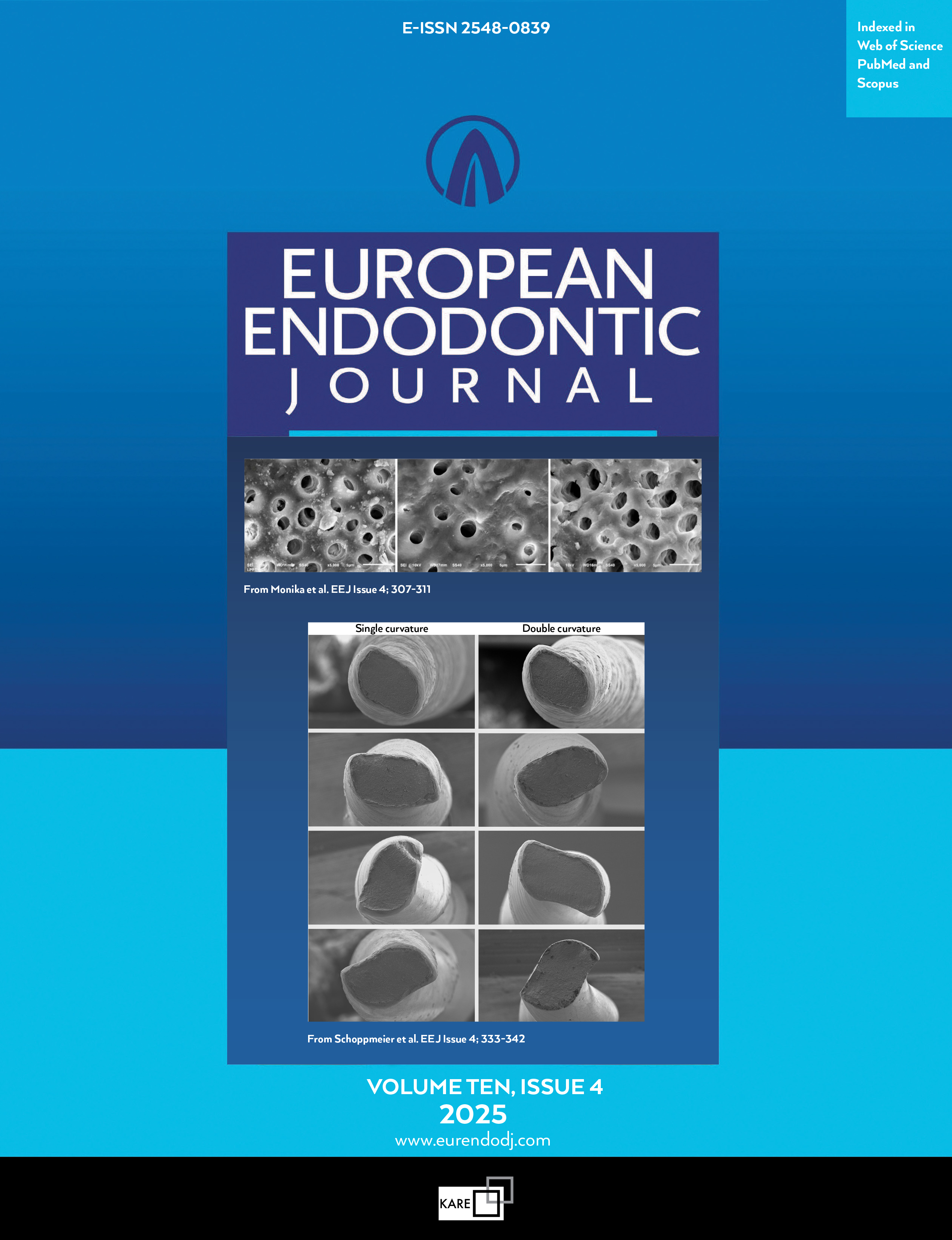Metrics
2024 IMPACT FACTOR
5 year Impact Factor
Eigenfactor Score
2024 CiteScore
Journal Citation Reports
(Clarivate 2025, JIF Rank)
Anesthetic Efficacy, Injection Pain and Pulse-rate Effect of Needle-free Injection in Pulpal Anesthesia of Maxillary Premolars with Irreversible Pulpitis: Randomised Clinical Study
Hatice Sağlam1, Ertuğrul Karataş21Department of Endodontics, Biruni University, Faculty of Dentistry, Istanbul, Türkiye2Department of Endodontics, Atatürk University, Faculty of Dentistry, Erzurum, Türkiye
Objective: This study aims to compare the pain perception associated with the needle-free system (Comfort-In) and the standard needle injection method during root canal treatments in adults.
Methods: Forty-four maxillary premolar teeth of the patients that applied to university for treatment and needed endodontic treatment were included in the study. Patients were anesthetized with two different injection methods; needle-free injection and conventional dental injection. In both groups, oxygen saturation and pulse measurements of the patients were recorded at 30-second intervals for 2 minutes before anesthesia and 4 minutes after anesthesia. Pain during the injection and opening of the access cavity preparation was recorded according to Visual Analog Scale (VAS). The data were analyzed according to a statistical program.
Results: In this study, a significant difference was found between the groups in terms of pain during anesthesia administration and the access cavity preparation (p<0.001). There were no significant differences in terms of gender and age (p>0.05). There was no significant difference between the groups in terms of oxygen saturation and pulse values before and after treatment (p>0.05).
Conclusion: Needle-free injection makes the treatment more comfortable for patients with injection fear and anxiety, making the procedure easier for the physician and the patient. (EEJ-2024-12-197)
Manuscript Language: English
(363 downloaded)


